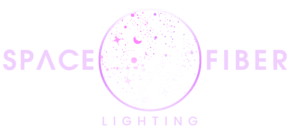What Is Fiber Optics Lighting
Fiber Optics concepts are developed through Optical Cables. This simple, easy-to-install system uses a fiber optic LED or Halogen illuminator as a light source with clear acrylic fibers. It is installed through special pre-drilled acrylic panels, or drill through any existing ceiling or wall, or fixed in flooring as per site application. A cluster of glowing stars is created with fiber optic cable, optional twinkling effect & colour changing effect is created by adding a twinkle wheel or color wheel. The glow effect is created by fiber optic of varying lengths extending out of the panel or ceiling into the light source kept at one accessible end of the ceiling or flooring.
Fiber optic lights function no differently than fiber optic cables designed for communication. The fibers themselves may be plastic or glass, though the intensity of the light source (illuminator) will have to be taken into consideration in the case of plastic, as it has a lower temperature tolerance than glass. Fibers are bundled together and mounted at the output of the light source, which may be located away from the application area.


Fibers designed for light are available in two varieties: End-emitting, where light is directed through the fiber to the end, acting as a spotlight, and side-emitting, where light is scattered along the length of the fiber to create a “neon light” effect.
Advantages of fiber optic lighting are:
- Long service life
- Heat isolation – as Heat generated by the light source is isolated from the application area.
- Electrical isolation – The power source for the light is isolated from the application area, making it safe in some environments
